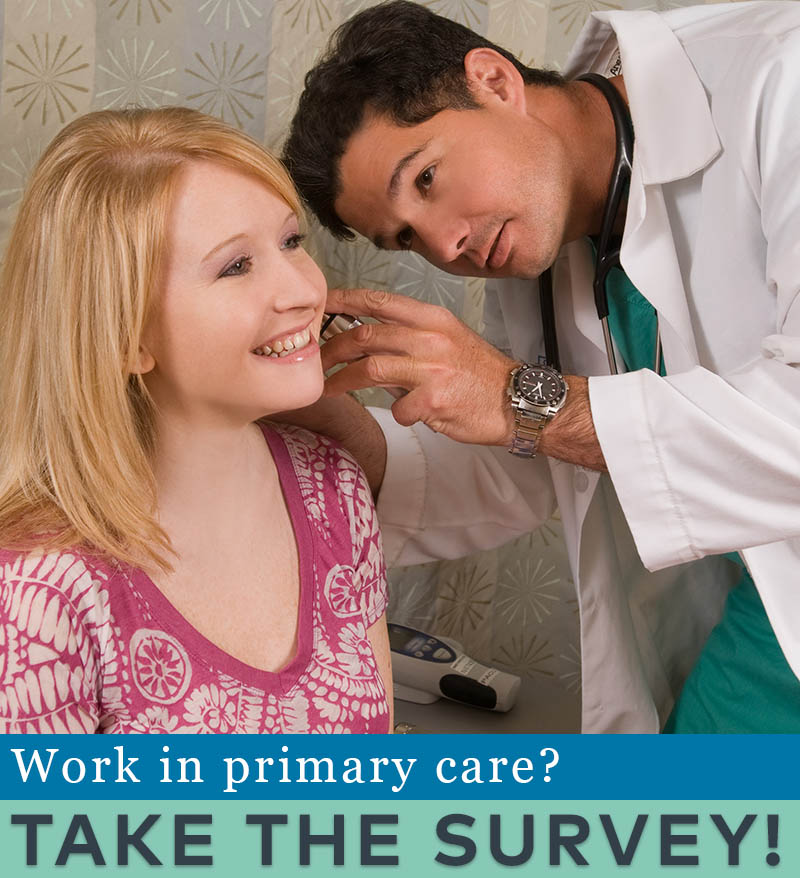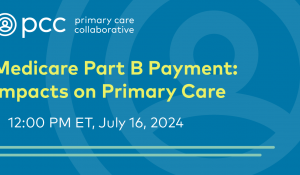WASHINGTON (July 1, 2020) – The Larry A. Green Center, in collaboration with the Primary Care Collaborative (PCC) and 3rd Conversation, today released new data showing that more than 35 percent of primary care clinicians report practices are not ready to address the increased patient need as the U.S. experiences a summer surge in COVID-19 cases. Alarmingly, nearly half of practices continue to lack personal protective gear (PPE), and 25 percent say local labs are struggling to keep up with COVID-19 testing demands.
This data comes at a time when nearly 30 states report rising COVID-19 numbers and 40 percent of practices say there has been an increase in patients suspected of having the virus. In addition, health burdens from chronic disease are on the rise, with 56 percent of clinicians reporting that patients are requiring more care as their existing health issues are exacerbated by lack of access during the pandemic.
“This is disaster recovery 101. As a nation, we needed to look at the gap analysis from day one, figure out where our weaknesses lie, and work to address them so we are not as vulnerable next time. However, we’ve failed to do that,” said Rebecca Etz, PhD, co-director of The Larry A. Green Center. “We already have had preventable patient morbidity and mortality. It’s shocking to see that half of practices say if things do not turn around it is likely they will not be here at end of year.”
The survey conducted by the Larry A. Green Center is part of an ongoing series looking at the attitudes of primary care clinicians and patients over the course of the COVID-19 pandemic. This week’s data also showed that practices report resorting to reusing PPE, although the U.S. Food and Drug Administration reports this practice being unsafe for some PPE types.
“While new federal, state and health plan virtual health policies have helped primary care, these turn out to be necessary, but not sufficient support,” said Ann Greiner, president and CEO of the Primary Care Collaborative. “These policies should absolutely not sunset. Plus, more financial support from the Provider Relief Fund is needed as is testing and PPE. You can draw a straight line between lack of primary care support and bad patient outcomes, particularly for patients of color.”
“Primary care is holding on by a thread as our country faces a surge in COVID-19 cases,” said Christine Bechtel, patient advocate and co-founder of 3rd Conversation. “Anyone – whether a policy maker, an insurer or patient – should be totally alarmed. This surge is a preview of what’s to come during the impending second wave, and this data tells us that we are in deep trouble. I don’t know how much longer we can shout at the wind, but I’ll say it again -- health care is only going to get more expensive and less available from here on out, unless policy makers and insurers act fast to prevent even larger economic and health catastrophes resulting from the imminent collapse of primary care.”
The survey of clinicians was fielded June 26-29, 2020 and received 735 responses from clinicians in 49 states. 64% of respondents identified their practice as family medicine, 17% as internal medicine, 8% as pediatrics, 6% as geriatrics, and 5% as other. Settings included 22% rural, 12% community health centers, 8% in schools/offices. 36% had 1-3 clinicians; 28% had 4-9 clinicians; 36% had 10+ clinicians. 35% self-owned, 13% independent and large group, 39% owned by a health system. 7% were convenience settings and 6% were membership-based.
###
Visit PCC’s website for:
- more details about the surveys
- executive summaries of the surveys
- infographic
Experts are available to provide insight and comment on the survey. If you would like to speak with them, please contact:
- Stephen Padre, spadre@pcpcc.org, 202-417-3911
- Maureen Abel, mabel@brgcommunications.com, 443-631-5090
The surveys are conducted every other week with an aim to measure the impact of COVID-19 on primary care practices, clinicians and patients. Results are reported on the websites of PCC and the Larry A. Green Center.

Are you a physician, nurse practitioner, or PA working in primary care?
Help PCC and the Larry A. Green Center track how your practice is responding to the COVID-19 outbreak by completing the Green Center's occasional survey.
The regular surveys are no longer being conducted.
COVID-19 Updates
May 9, 2022 | Primary Care Collaborative
April 19, 2022 | Primary Care Collaborative
April 19, 2022 | Primary Care Collaborative
March 7, 2022 | STAT
February 27, 2022
- 1 of 39
- next ›
Recent News
August 16, 2024
August 12, 2024
July 16, 2024
May webinar highlights: “The Commercial Market: Alternative Payment Models for Primary Care” Nate Murray explains w… https://t.co/KX9Wi2w6oY —
1 year 2 months ago
@CMSinnovates’ primary care strategy is rooted in a 2021 @theNASEM’s report which called #primarycare “foundational… https://t.co/glbPxvCysg —
1 year 2 months ago
@CMSinnovates has a new #primarycare strategy, envisioning “ACO-based primary care model tests that may focus on pr… https://t.co/aJGF1z411l —
1 year 2 months ago
- Page 1
- ››
Secondary menu
Copyright © 2024 Primary Care Collaborative




